In the first week of August, I made use of one of Colombia’s statutory holidays to plan a trip to the coast. I booked a flight to Santa Marta, a Caribbean port city and the first Spanish settlement in Colombia. Santa Marta is hot and humid. On the day I arrived, the temperature rose into the thirties and the air held the strong salty odour of seawater. Despite the weather, vendors were selling hot cups of tinto, the Colombian word for coffee, and café campesino, coffee mixed with unrefined cane sugar and spices. I spent the first day of my vacation walking along the harbourfront, enjoying the relaxed change of pace to the often-frenetic energy of Bogotá. Later, I caught a local bus to Bahia Concha beach and watched the sunset along the shoreline.



My second day started at four in the morning. Without truly understanding what I was signing myself up for, I booked a four-day 50-kilometre hiking expedition in the Sierra Nevada, just outside of Santa Marta, to reach the Ciudad Perdida (“Lost City”), also known as Teyuna. I head out with my hiking pack in a small van with a group of other travelers, a mix of Colombians, Latin Americans from other countries, and gringos. We first drove three hours through winding dirt path to the small town of El Mamey where we had a lunch of ajiaco soup, plantains, rice, beans, and coconut lemonade. From there, our group began the immediately uphill hike out of town and into the massif.
Our tour was led by a mix of indigenous Kogi and Colombian guides. The Kogi people (meaning “jaguar” in the Kogi language), along with the Arhuaco, Wiwa, and the Assario, are descendants of the pre-Columbian Tairona culture. Tairona is the namesake for the famous Tayrona National Park next to Santa Marta. Many modern-day indigenous groups have preserved cultural, spiritual, and agricultural practices from their ancestors, with families living in small farming villages called Kuibolos in the mountains. Villages are connected by pathways carved into dense jungle and expansive grass plains through stone, dirt, and cleared bush. In only our first day of hiking, I walked through what seemed like a thousand different scenes—the Buritaca River, farmland, mud, tropical rainforest, banana plantations. Wild coffee beans and cacao grew along the trail, also shared by dogs, pigs, donkeys, horses, and chickens.
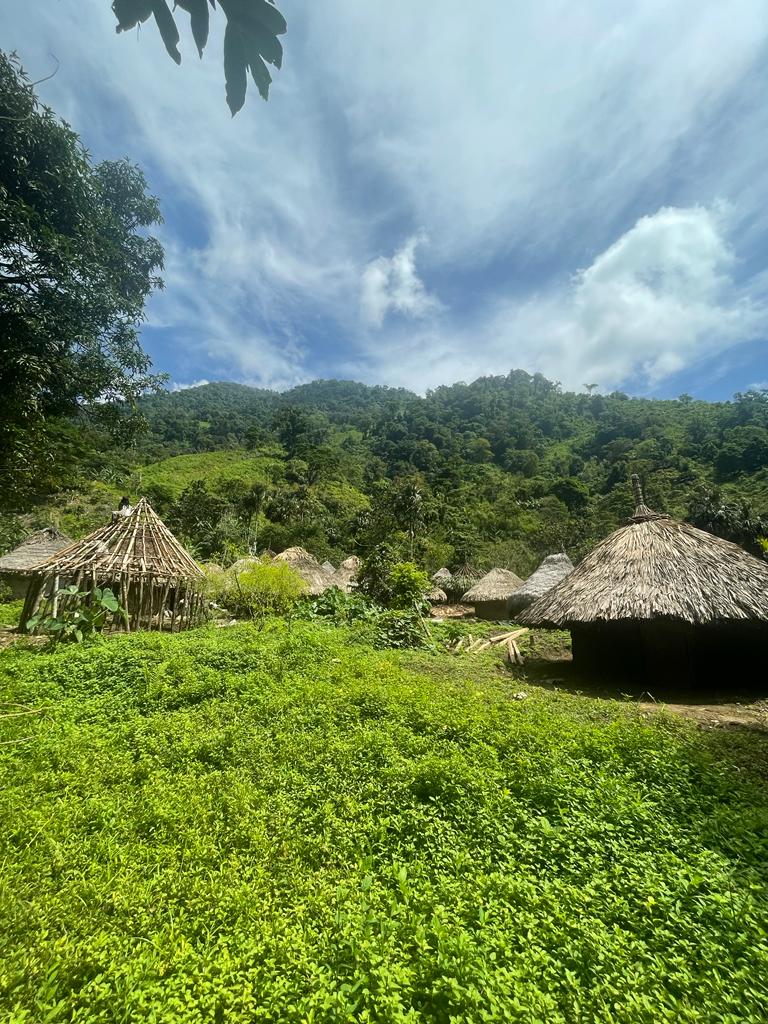
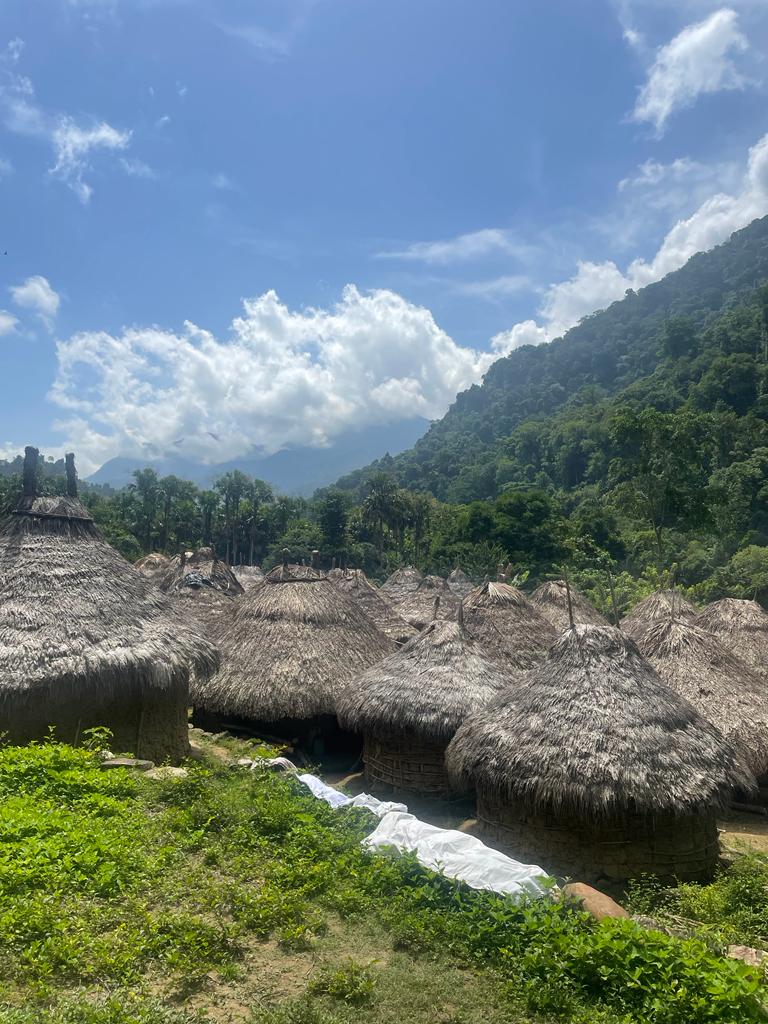
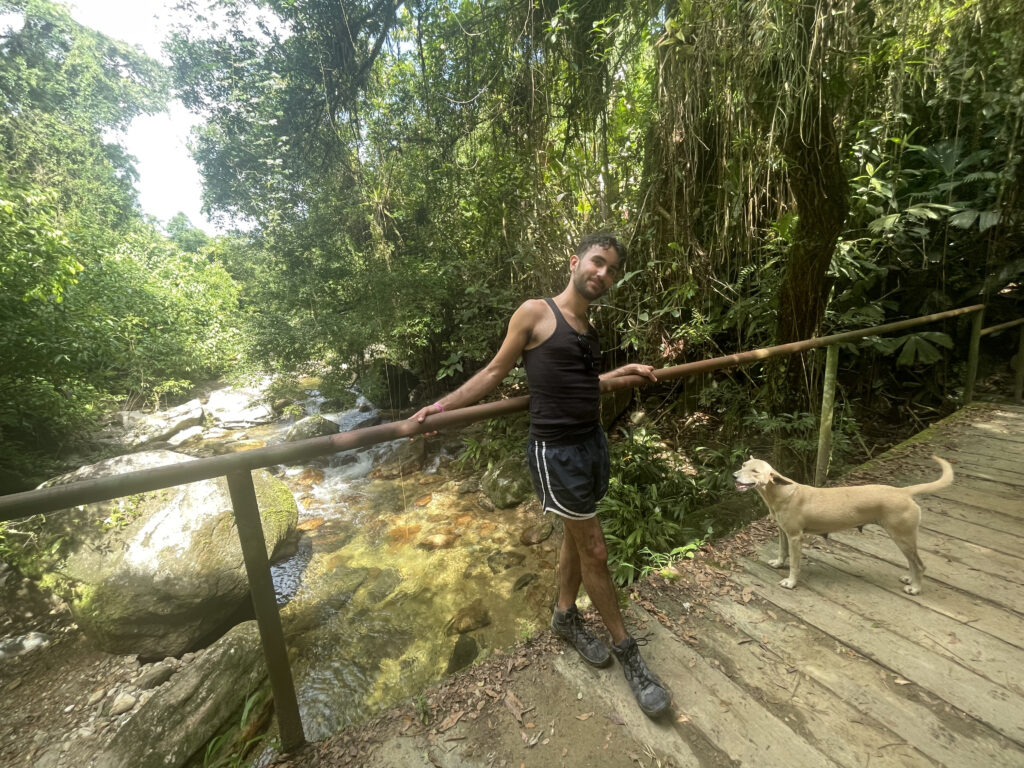
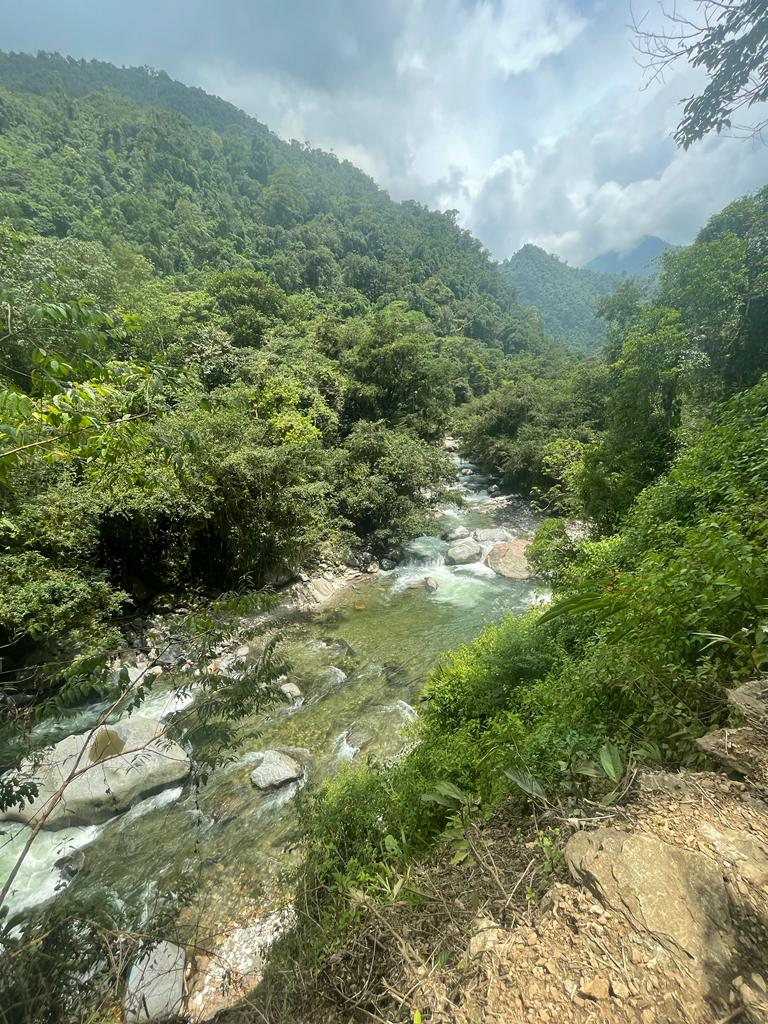

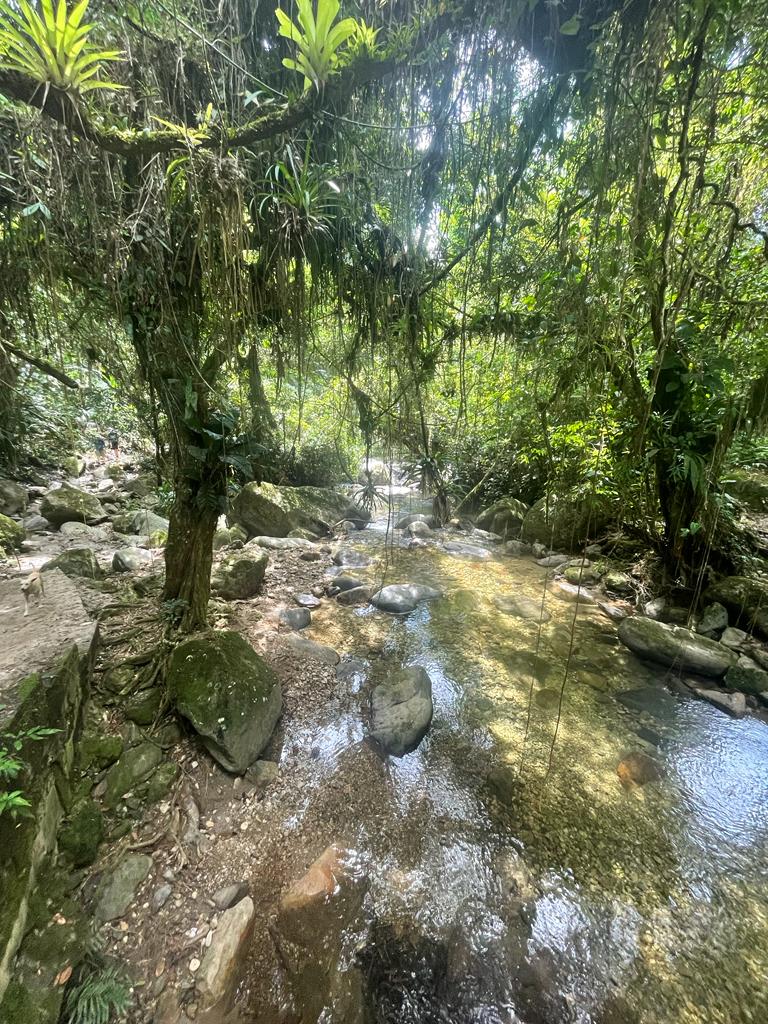
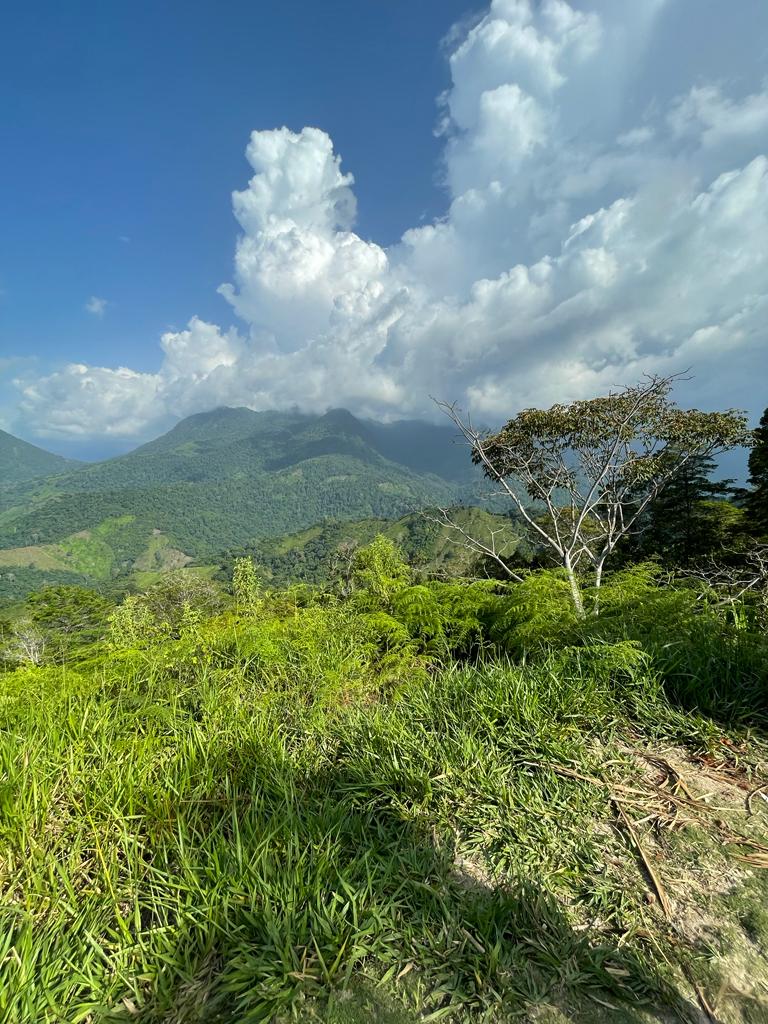
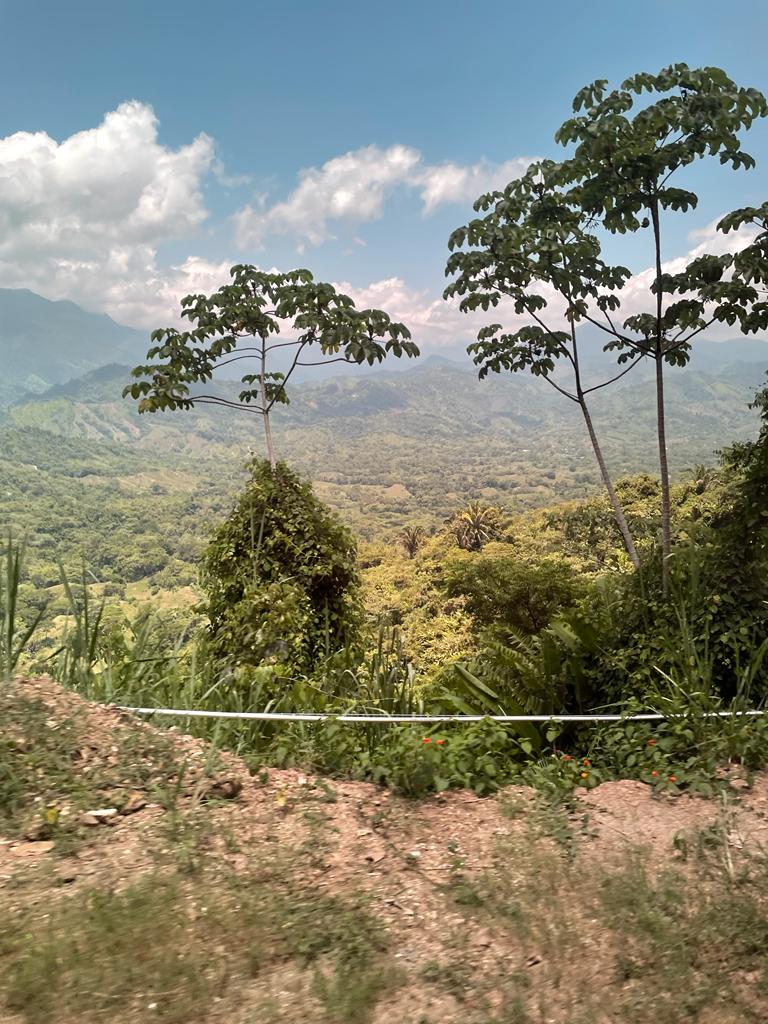
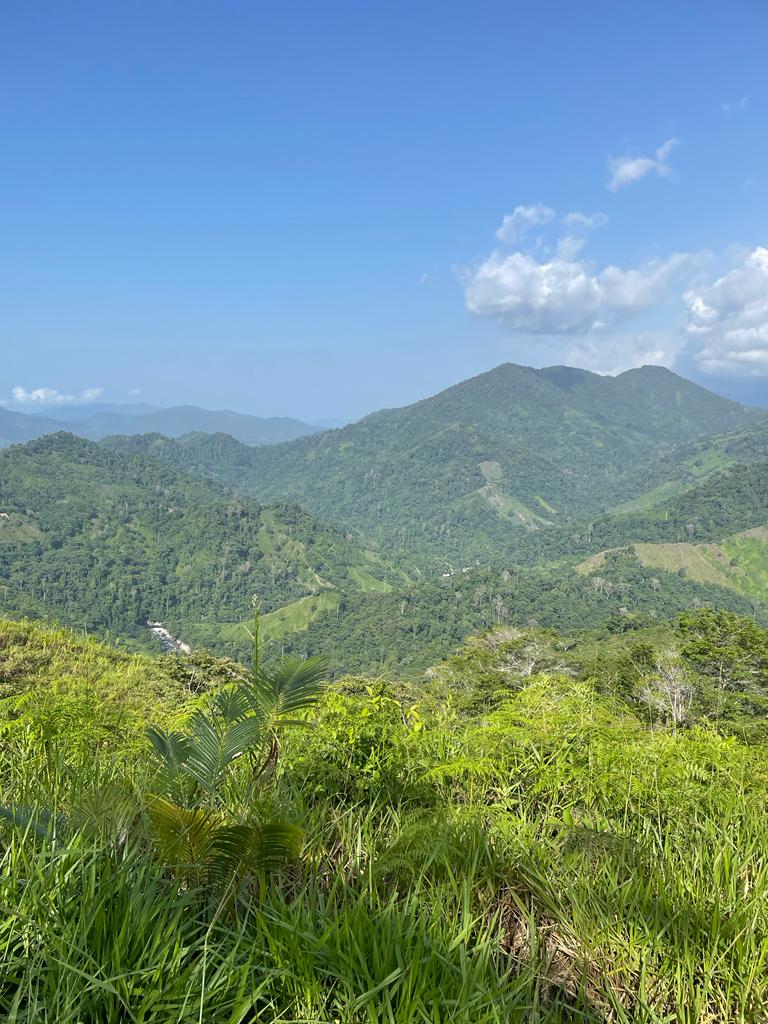
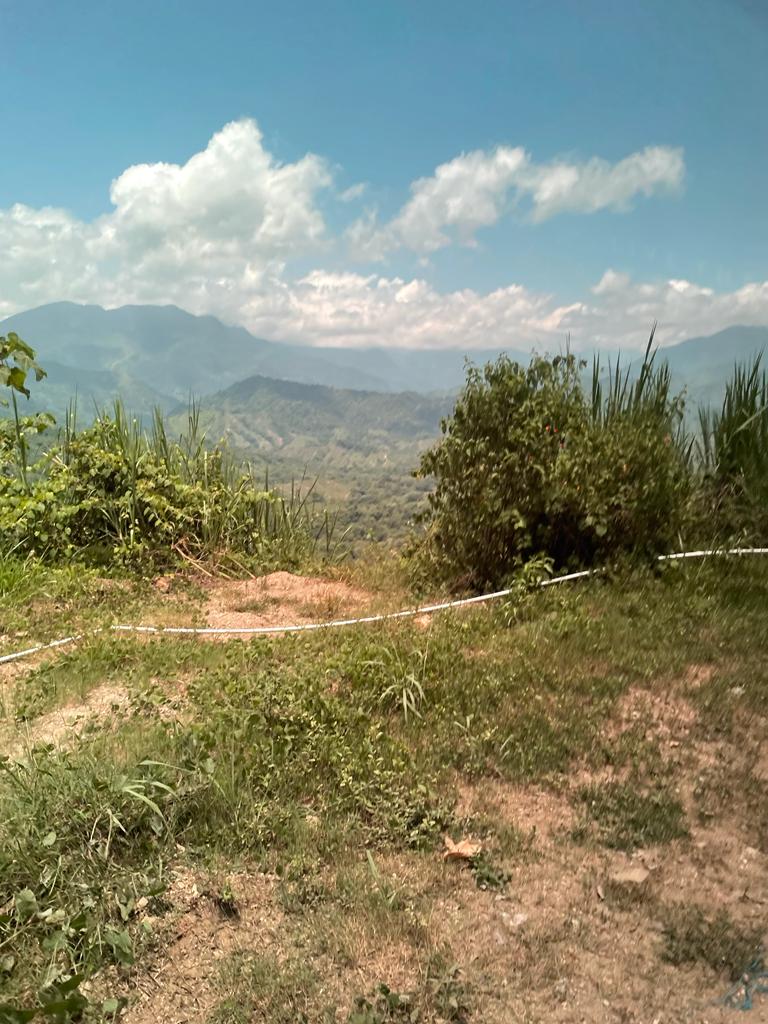
Ciudad Perdida was built around 800 CE, 650 years before the Inca construction of Macchu Pichu in modern-day Peru. In the pre-Columbian era, the city was the political and cultural hub of all neighbouring Tairona villages and was home to up to 8000 people. Throughout the beginning of the Spanish conquest in Colombia, indigenous groups continued to use Ciudad Perdida as a meeting place to perform spiritual rituals and trade goods, especially gold, which was abundant in the area. In this period, conquistadors began enslaving and forcibly displacing Tairona fishing communities based along the coast. Mountain-dwelling groups who previously relied on trade with their neighbours for salt and fish were forced to begin trading gold directly with Spanish merchants.
This uneasy alliance continued until the mid-16th century, which saw a mass exodus from the Ciudad Perdida. The catalyst for the city’s abandonment is still unclear. Some experts say indigenous groups fled further into the mountains to escape the yearslong conflict they experienced with the Spanish.[1] Others, including my tour guide, suggest that infectious disease introduced by the conquistadors may have caused a plague throughout the city. Regardless of the reason, one fact is known for certain: “Ciudad Perdida” is a misnomer. Teyuna was never truly “lost” to the Tairona and their descendants, only to the knowledge of Spanish colonizers. The city remained an important pilgrimage site for many Chibchan-speaking peoples, with tribal priests called mamos stationed permanently at the city. Indigenous groups have continuously used the city as a part of their network from pre-Columbian times through to the modern day.
Teyuna remained hidden from colonial knowledge until 1972, when a group of local treasure hunters (in Spanish, “guaquero” meaning “grave robber”) accidentally discovered the hidden entrance to the city. The group wasted no time in ruthlessly looting the city, selling as much of the gold, pottery, and artefacts on the black market as they could find. This discovery attracted the attention of other raiding groups to Teyuna. A violent power struggle for control of the loot eventually erupted, leading to several deaths and the guaqeros to name the city the “green hell.” The emergence of new historical artefacts on the market also alerted archeologists to the existence of Teyuna. Accompanied by military troops, researchers arrived in 1976 and began a careful excavation of the renamed “Lost City.” Although Teyuna began to see more tourism and government intervention into the protection of the city, sporadic conflict with looting parties continued over the next few decades.
Throughout the latter half of the 20th century, the Sierra Nevada de Santa Marta developed as a hotspot for competing phenomena: tourism, the Colombian armed conflict, and drug trafficking. Left-wing guerrilla groups like the National Liberation Army (ELN) and Revolutionary Armed Forces of Colombia (FARC) favoured the mountainous Sierra Nevada as an ideal location to mobilise their troops and equipment due its remoteness and strategic high elevation. Right-wing paramilitary groups, such as the Tayrona Resistance Front (BRT), and the Colombian National Army, shortly followed and the groups began a territorial dispute. The area held special significance for its abundance of coca crops and role in the coca trade.
In 2001, violent conflict between the right-wing paramilitary group United Self-Defence Forces of Colombia (AUC) and BRT led to the forced displacement of over 9000 people. In 2003, the ELN kidnapped a group of foreign tourists visiting the Ciudad Perdida and held them hostage for 100 days. They eventually released the tourists unharmed in exchange for the Colombian government’s promise to investigate right-wing paramilitary human rights abuses in the area. In 2008, the United Nations estimated that 80% of all killings in Colombia’s armed conflict were by army-backed paramilitaries, 12% by left-wing guerrilla groups, and 8% by official government forces.[2] For several years after the ELN released its hostages, AUC continued attacking both indigenous villagers and non-Indigenous groups in the Sierra Nevada.
After a two-year hiatus, the Colombian government reopened the Ciudad Perdida to guided tourist hikes. The area remains actively patrolled by Colombian Army officials and is no longer considered an active region of the armed conflict. Of course, many locals still have strong memories of the violence that has occurred throughout the Sierra Nevada. Today, much of the gold looted from Teyuna in the 1970s remains in European museums, and none residing with the descendants of their forgers. Many younger former paramilitary operatives have been reintegrated into the tourism industry in the area.
With this history in mind, arriving on the morning of my last day at the entrance of the city was a powerful experience. Entering Ciudad Perdida is its own challenge: the only way in is up through 2000 stone steps. The climb is steep. That morning, we left our heavy packs at our overnight camp and took the essentials: water, a hat, our cameras. Before walking through the city, our guide led us through a mindfulness breathing exercise. Teyuna is a sacred place for many groups. Whatever parts of our own stories we travellers were taking with us on our hike, in that moment it felt necessary to leave everything on those final steps and discover the city through a tabula rasa.
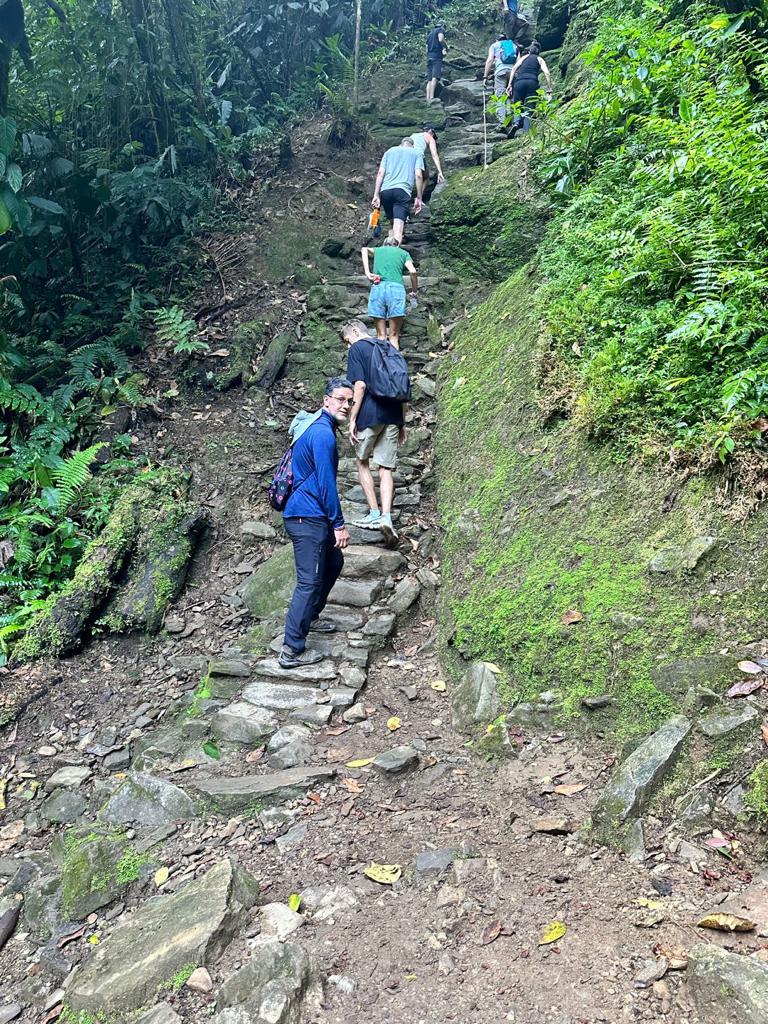
Teyuna is a sprawling arrangement of stone terraces and plazas. While the entrance is already 1200 metres above sea-level, a Kogi spiritual leader, called a mamo, lives with his family at the highest point of the city. In September, the government closes Teyuna to tourist access so that the mamo can cleanse it and indigenous communities can make their pilgrimage to the city. Mamos, many of whom live at even higher elevation throughout the Sierra Nevada, consider the Tairona-descendant peoples to be “Elder Brothers” tasked with protecting the world. Western civilization is populated by “Younger Brothers” who are devastating the world’s resources. Despite typically living in isolation from mainstream society, a group of Kogi mamos participated in a documentary series in 2012 to warn the outside world of the impact of environmental destruction.[3]
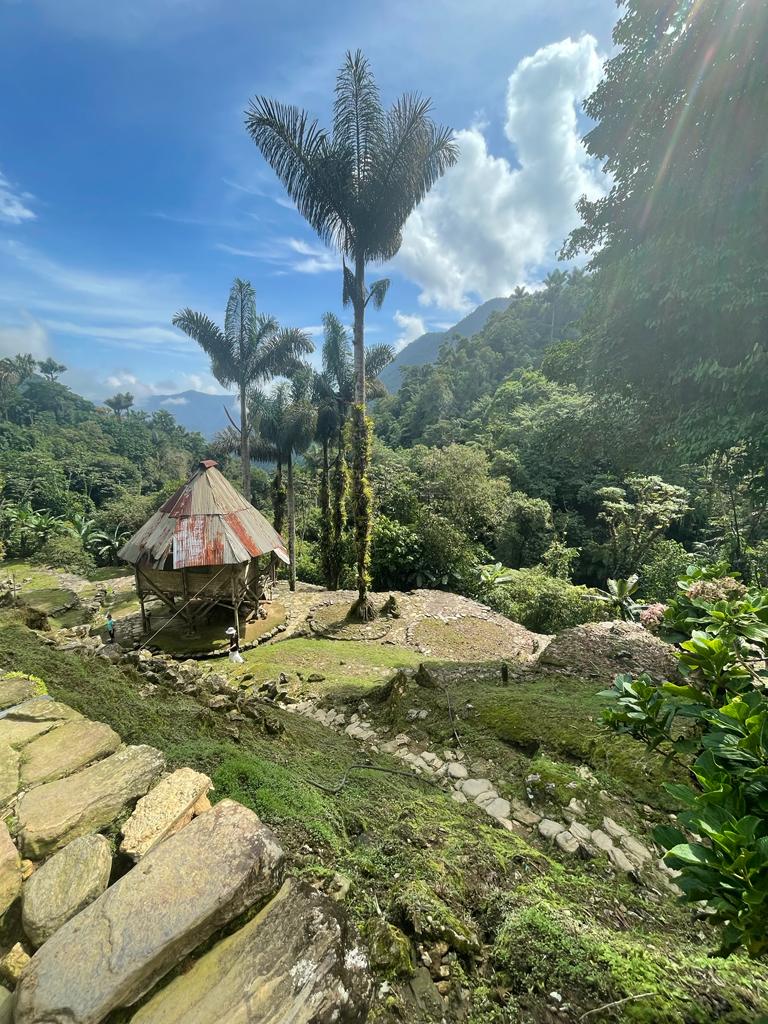
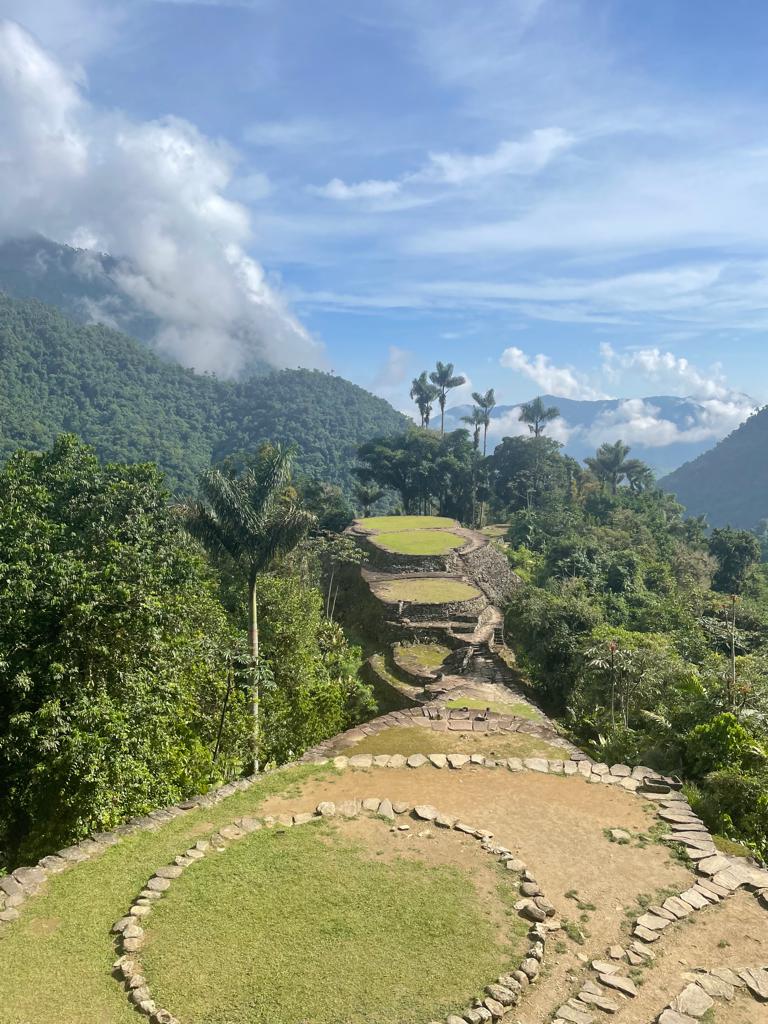
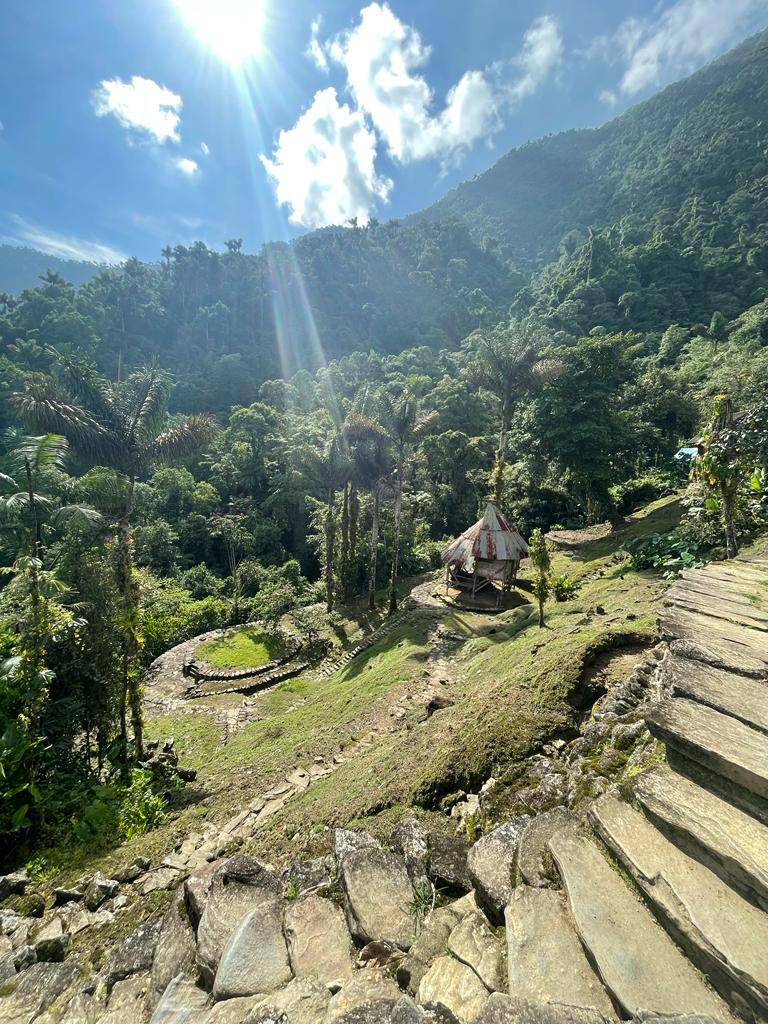
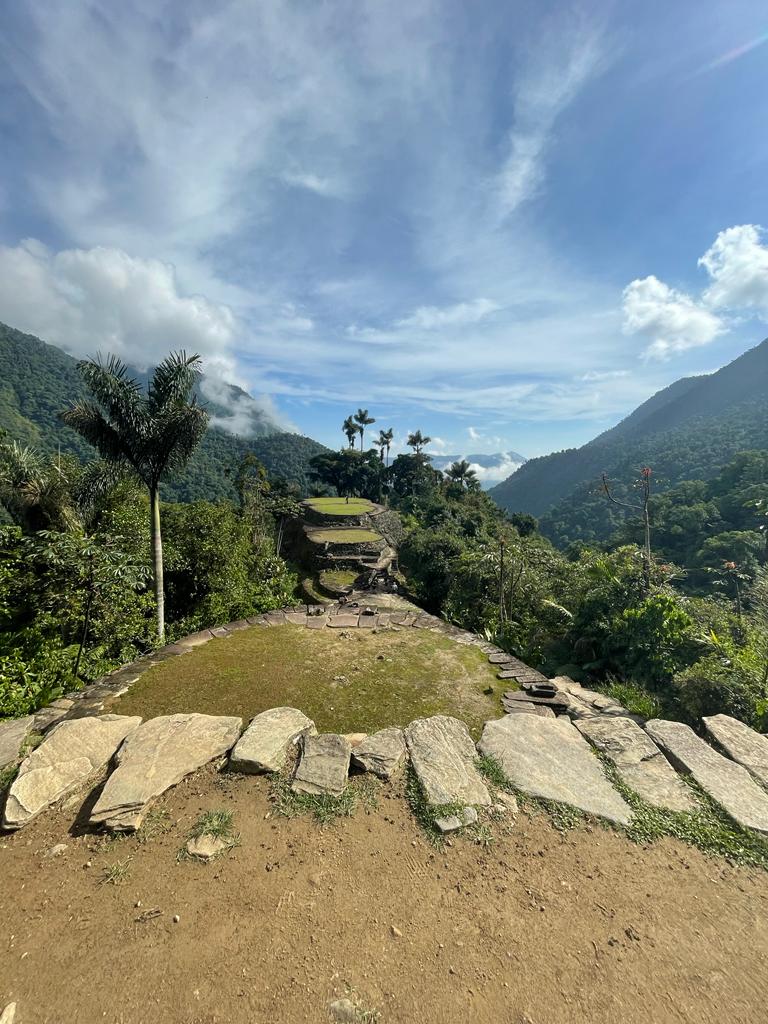
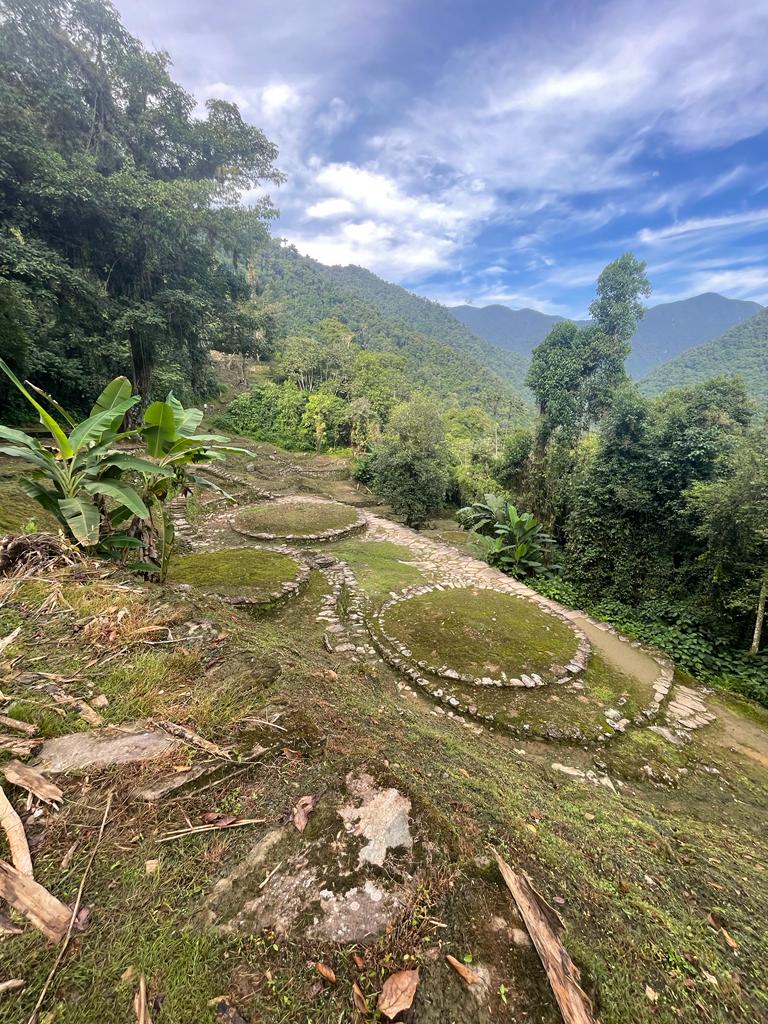
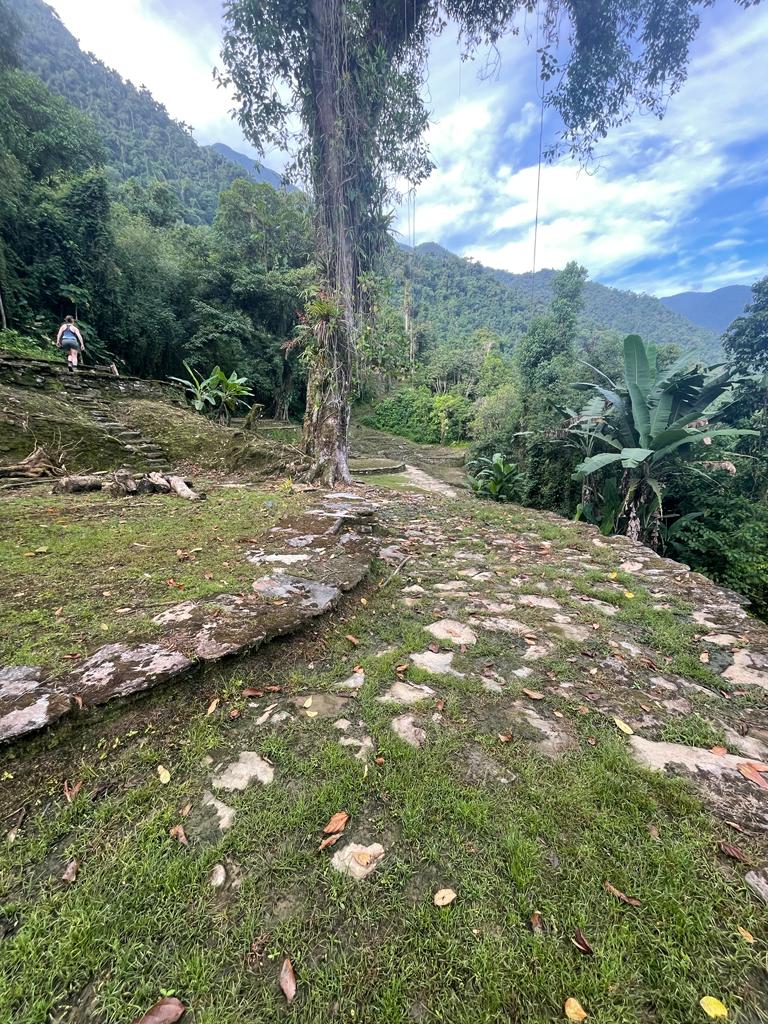
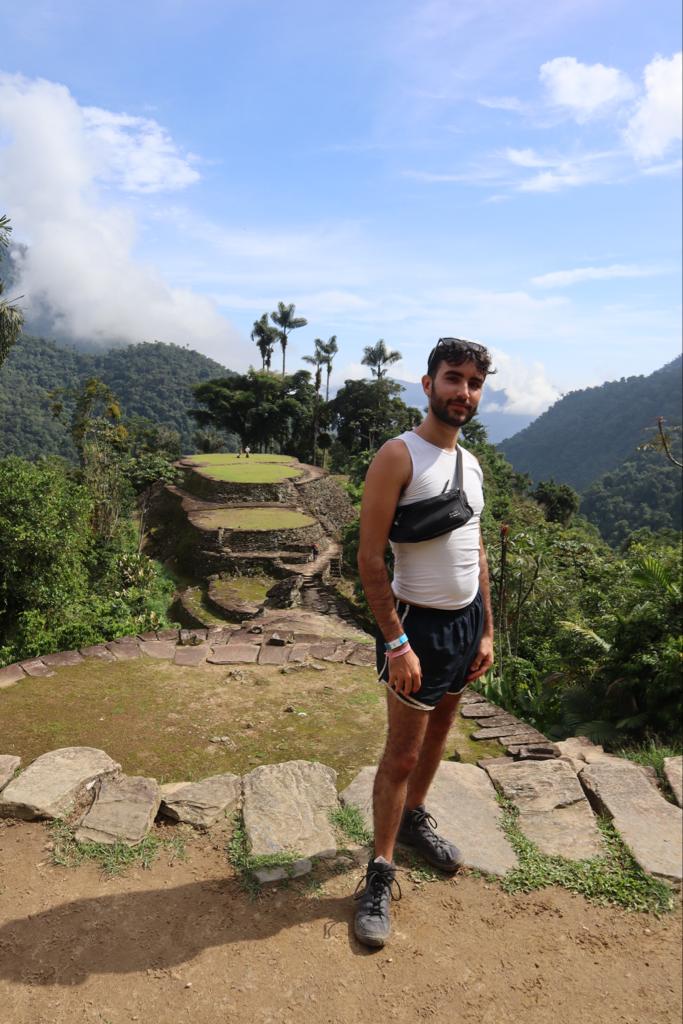
Teyuna is so much more than an archeological ruin. It is one of the oldest sources of knowledge still available from pre-Columbian civilizations. It is a symbol of the recent history of Colombia: the armed conflict between the government, paramilitary, and guerrilla groups; the pernicious impact of the cocaine trade on Colombians, especially indigenous groups; the increasing evidence of climate destruction; and an example of what has been lost to European colonization of the Americas. My last day of the hike felt like it was passing in slow motion: as we retraced our steps towards El Mamey, passing travellers at the beginning of their hikes, I felt immense gratitude for the ability to situate my work in transitional justice and human trafficking within the ambit of lived experiences and real places.
[1] Fernanda Vega (2017) “Turismo y posconflicto. Una reflexión a partir del escenario del Camino a Teyuna (Ciudad perdida)”, XXI Turismo y Sociedad 165.
[2] Constanza Vieira, “International Criminal Court Scrutinises Paramilitary Crimes, Inter Press Service (August 27, 2008), online: <https://web.archive.org/web/20110610224121/http:/ipsnews.net/news.asp?idnews=43696>.
[3] Alan Ereira, Aluna (BBC: London, 2012).
